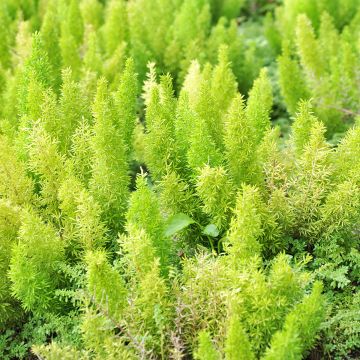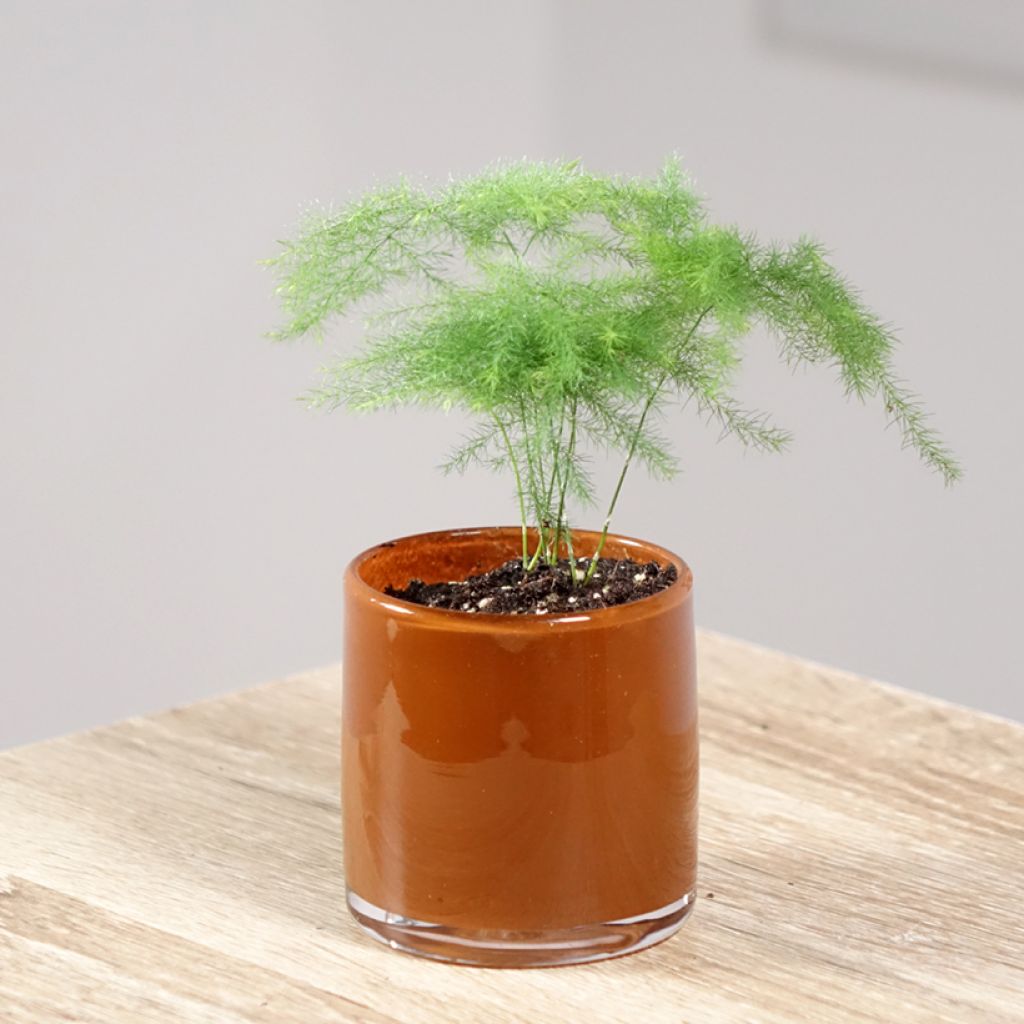

Asparagus plumosus - Asperge des fleuristes, Asperge à bouquets
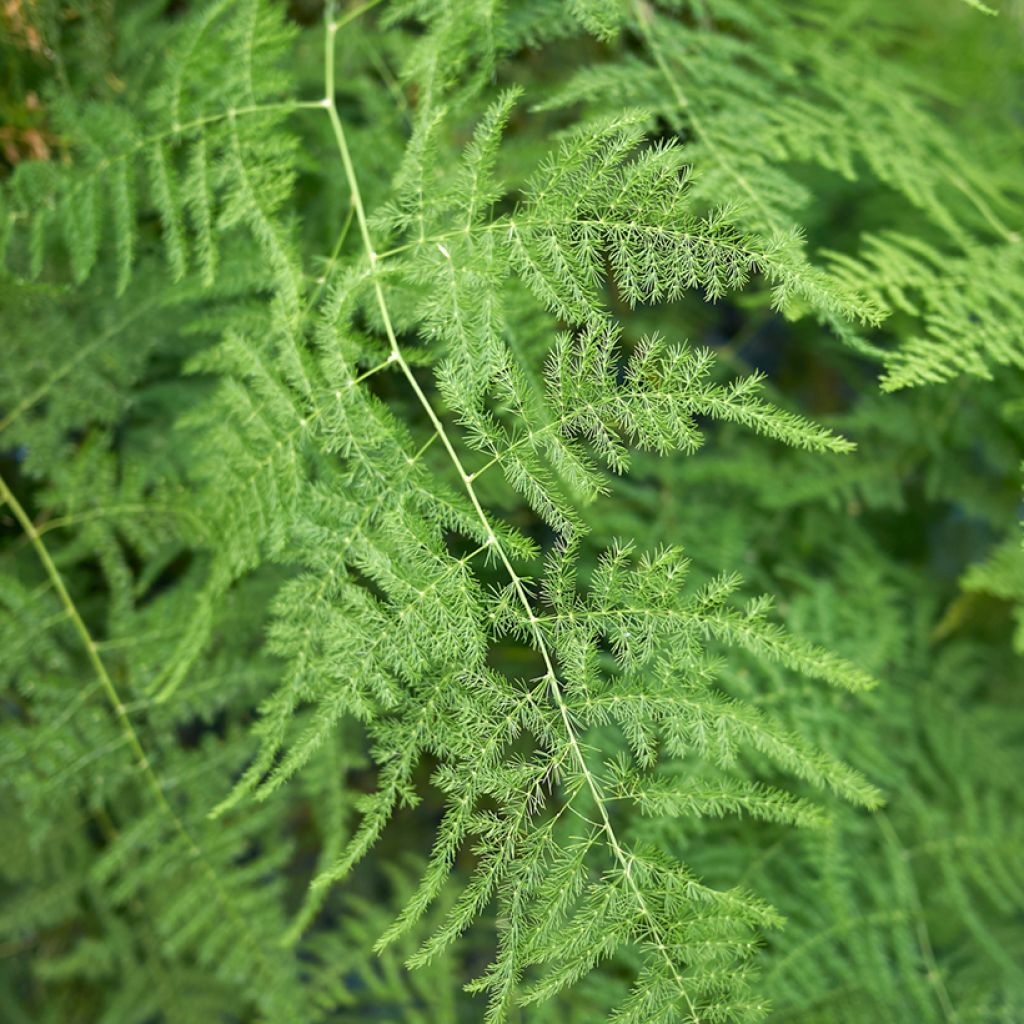

Asparagus plumosus - Asperge des fleuristes, Asperge à bouquets
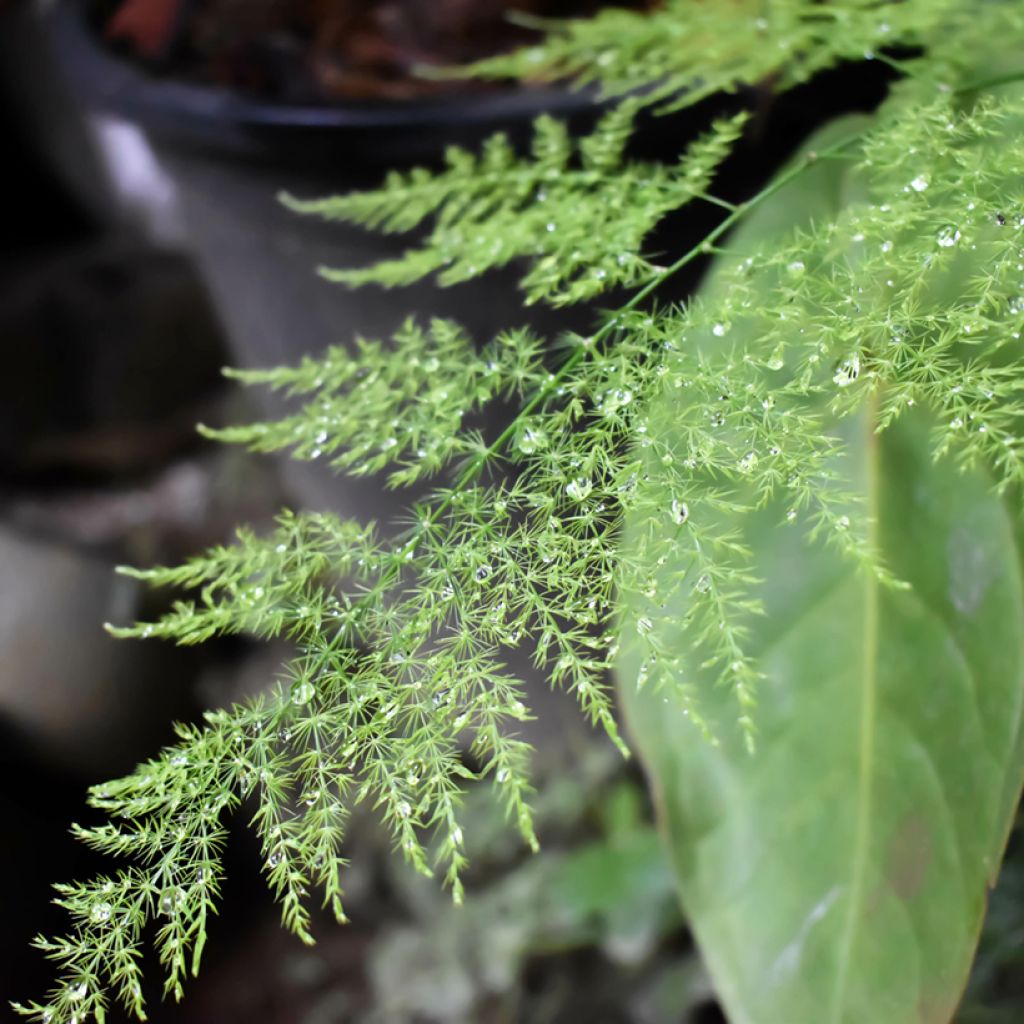

Asparagus plumosus - Asperge des fleuristes, Asperge à bouquets


Asparagus plumosus - Asperge des fleuristes, Asperge à bouquets


Asparagus plumosus - Asperge des fleuristes, Asperge à bouquets
Asparagus plumosus - Esparraguera plumosa
Asparagus plumosus
Esparraguera plumosa, helecho plumoso, espuma de mar, brisa
This item cannot be shipped to the selected country
Delivery charge from 6,90 €
More information
Shipping country:
-
-
-
-
-
-
-
-
-
-
-
-
-
-
-
-
-
-
-
-
-
-
-
-
-
-
-
-
-
-
-
-
Schedule delivery date,
and select date in basket
This plant carries a 30 days recovery warranty
More information
We guarantee the quality of our plants for a full growing cycle, and will replace at our expense any plant that fails to recover under normal climatic and planting conditions.
From 7,90 € for pickup delivery and 6,90 € for home delivery
Express home delivery from 8,90 €.
Description
The Asparagus plumosus, commonly known as Asparagus Fern, is a refined houseplant with an airy, feathery foliage that adds a touch of lightness and elegance to any space. Perfect for modern, Scandinavian, or classic interiors, it looks equally decorative in a terracotta pot or a hanging planter. Easy to care for, it thrives in a bright spot without direct sunlight and prefers regular but moderate watering. Use a discreet stake to guide its long climbing stems and enhance its decorative appeal.
The Asparagus Fern belongs to the Asparagaceae family and is closely related to garden asparagus. This perennial is a natural climber with long, flexible stems that can reach 2–3 m if left unpruned. When grown in a pot and regularly trimmed, it forms a compact clump around 50 cm tall and 60–70 cm wide. The main stems are thorny. Its feathery foliage consists of cladodes—modified stems that function as leaves. These are flat, fine, and often resemble traditional leaves, though botanically speaking, they are stems. In the case of the Asparagus plumosus, also called Asparagus setaceus, the cladodes are delicately arranged into fascicles, giving them their characteristic light, feathery appearance. Though flowering is rare indoors, it produces small, star-shaped white, nectariferous flowers followed by decorative red berries that are toxic if ingested.
Native to South Africa, the Asparagus plumosus grows in shaded undergrowth and humid forests. It thrives in temperate, shaded environments where its long climbing stems cling to surrounding vegetation.
Indoors, this plant prefers bright, indirect light, moderate humidity, and an ideal temperature between 18–20°C. The substrate should be kept slightly moist, avoiding waterlogging. Not hardy, it cannot tolerate temperatures below -6°C and must be grown indoors in temperate climates.
The Asparagus plumosus is a versatile decorative asset ideal for adding freshness and lightness to your home. Place it in a bright living room, bedroom, or even a sheltered conservatory. Its airy habit pairs well with rattan supports, wooden shelves, or wicker hangers for a bohemian-chic style. For a more contemporary look, opt for white ceramic or raw concrete planters. Its flowing silhouette softens defined lines and adds flow to a minimalist décor.
The Asparagus plumosus pairs beautifully with plants offering a contrasting foliage. For an elegant tropical effect, combine it with the Philodendron 'White Princess', with its white-variegated leaves. A Spider Plant (Chlorophytum) will complete the group with its long, trailing variegated leaves. These three plants will create a lush, low-maintenance display.
Report an error about the product description
Asparagus plumosus - Esparraguera plumosa in pictures


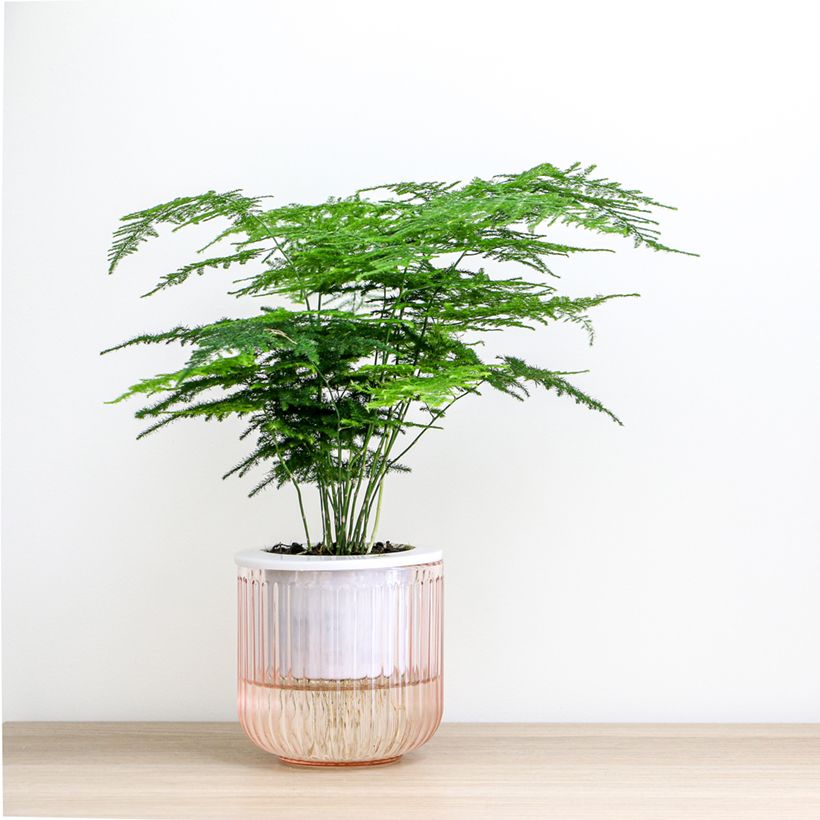

Foliage
Plant habit
Flowering
Botanical data
Asparagus
plumosus
Asparagaceae
Esparraguera plumosa, helecho plumoso, espuma de mar, brisa
South Africa
Safety measures
Other Asparagus
View all →Location
Location
Maintenance and care
Potting advice, substrates and fertilisers
Houseplant care
Disease and pest advice
Maintenance and care
This item has not been reviewed yet - be the first to leave a review about it.
Haven't found what you were looking for?
Hardiness is the lowest winter temperature a plant can endure without suffering serious damage or even dying. However, hardiness is affected by location (a sheltered area, such as a patio), protection (winter cover) and soil type (hardiness is improved by well-drained soil).

Photo Sharing Terms & Conditions
In order to encourage gardeners to interact and share their experiences, Promesse de fleurs offers various media enabling content to be uploaded onto its Site - in particular via the ‘Photo sharing’ module.
The User agrees to refrain from:
- Posting any content that is illegal, prejudicial, insulting, racist, inciteful to hatred, revisionist, contrary to public decency, that infringes on privacy or on the privacy rights of third parties, in particular the publicity rights of persons and goods, intellectual property rights, or the right to privacy.
- Submitting content on behalf of a third party;
- Impersonate the identity of a third party and/or publish any personal information about a third party;
In general, the User undertakes to refrain from any unethical behaviour.
All Content (in particular text, comments, files, images, photos, videos, creative works, etc.), which may be subject to property or intellectual property rights, image or other private rights, shall remain the property of the User, subject to the limited rights granted by the terms of the licence granted by Promesse de fleurs as stated below. Users are at liberty to publish or not to publish such Content on the Site, notably via the ‘Photo Sharing’ facility, and accept that this Content shall be made public and freely accessible, notably on the Internet.
Users further acknowledge, undertake to have ,and guarantee that they hold all necessary rights and permissions to publish such material on the Site, in particular with regard to the legislation in force pertaining to any privacy, property, intellectual property, image, or contractual rights, or rights of any other nature. By publishing such Content on the Site, Users acknowledge accepting full liability as publishers of the Content within the meaning of the law, and grant Promesse de fleurs, free of charge, an inclusive, worldwide licence for the said Content for the entire duration of its publication, including all reproduction, representation, up/downloading, displaying, performing, transmission, and storage rights.
Users also grant permission for their name to be linked to the Content and accept that this link may not always be made available.
By engaging in posting material, Users consent to their Content becoming automatically accessible on the Internet, in particular on other sites and/or blogs and/or web pages of the Promesse de fleurs site, including in particular social pages and the Promesse de fleurs catalogue.
Users may secure the removal of entrusted content free of charge by issuing a simple request via our contact form.
The flowering period indicated on our website applies to countries and regions located in USDA zone 8 (France, the United Kingdom, Ireland, the Netherlands, etc.)
It will vary according to where you live:
- In zones 9 to 10 (Italy, Spain, Greece, etc.), flowering will occur about 2 to 4 weeks earlier.
- In zones 6 to 7 (Germany, Poland, Slovenia, and lower mountainous regions), flowering will be delayed by 2 to 3 weeks.
- In zone 5 (Central Europe, Scandinavia), blooming will be delayed by 3 to 5 weeks.
In temperate climates, pruning of spring-flowering shrubs (forsythia, spireas, etc.) should be done just after flowering.
Pruning of summer-flowering shrubs (Indian Lilac, Perovskia, etc.) can be done in winter or spring.
In cold regions as well as with frost-sensitive plants, avoid pruning too early when severe frosts may still occur.
The planting period indicated on our website applies to countries and regions located in USDA zone 8 (France, United Kingdom, Ireland, Netherlands).
It will vary according to where you live:
- In Mediterranean zones (Marseille, Madrid, Milan, etc.), autumn and winter are the best planting periods.
- In continental zones (Strasbourg, Munich, Vienna, etc.), delay planting by 2 to 3 weeks in spring and bring it forward by 2 to 4 weeks in autumn.
- In mountainous regions (the Alps, Pyrenees, Carpathians, etc.), it is best to plant in late spring (May-June) or late summer (August-September).
The harvesting period indicated on our website applies to countries and regions in USDA zone 8 (France, England, Ireland, the Netherlands).
In colder areas (Scandinavia, Poland, Austria...) fruit and vegetable harvests are likely to be delayed by 3-4 weeks.
In warmer areas (Italy, Spain, Greece, etc.), harvesting will probably take place earlier, depending on weather conditions.
The sowing periods indicated on our website apply to countries and regions within USDA Zone 8 (France, UK, Ireland, Netherlands).
In colder areas (Scandinavia, Poland, Austria...), delay any outdoor sowing by 3-4 weeks, or sow under glass.
In warmer climes (Italy, Spain, Greece, etc.), bring outdoor sowing forward by a few weeks.

































